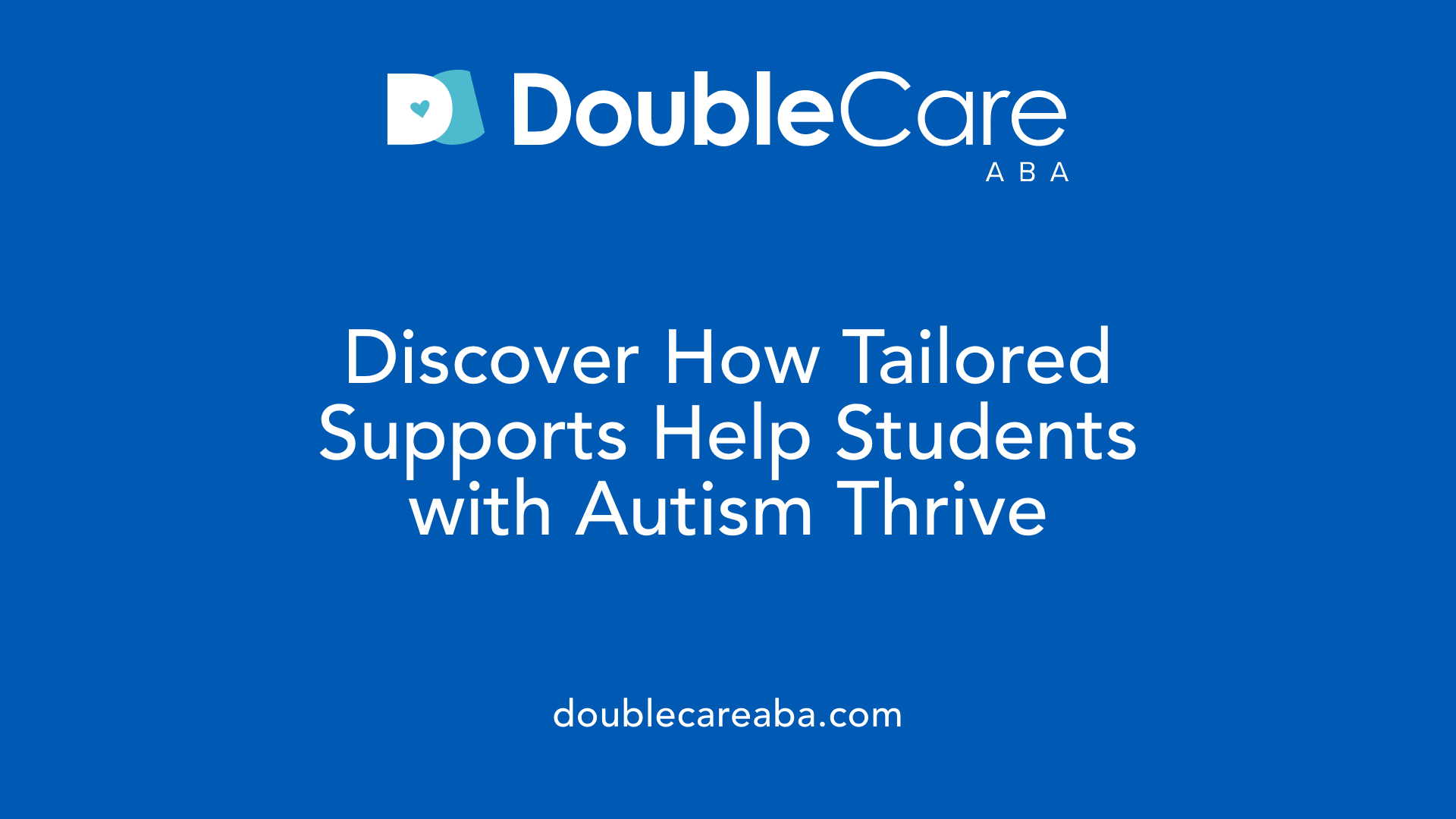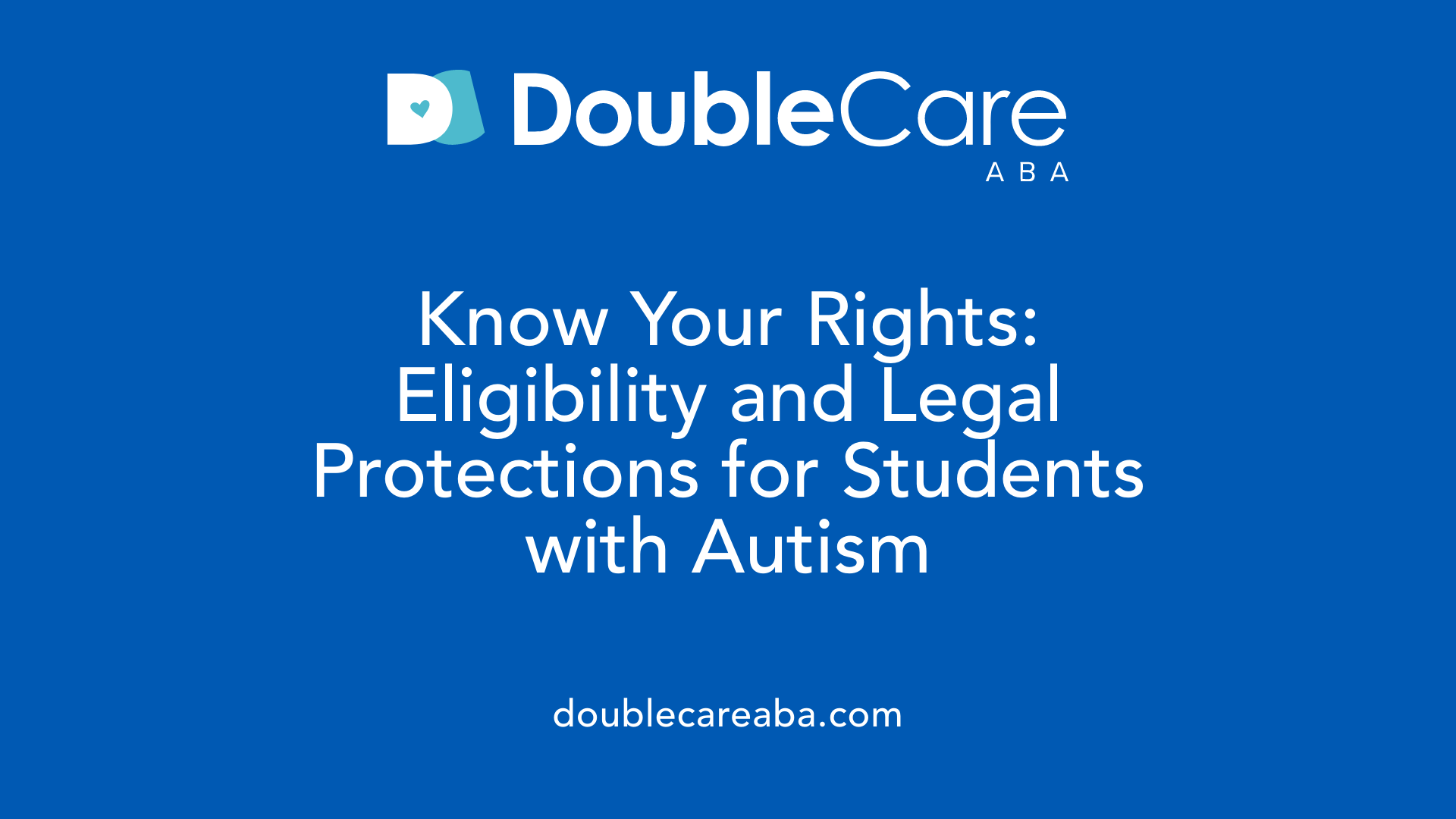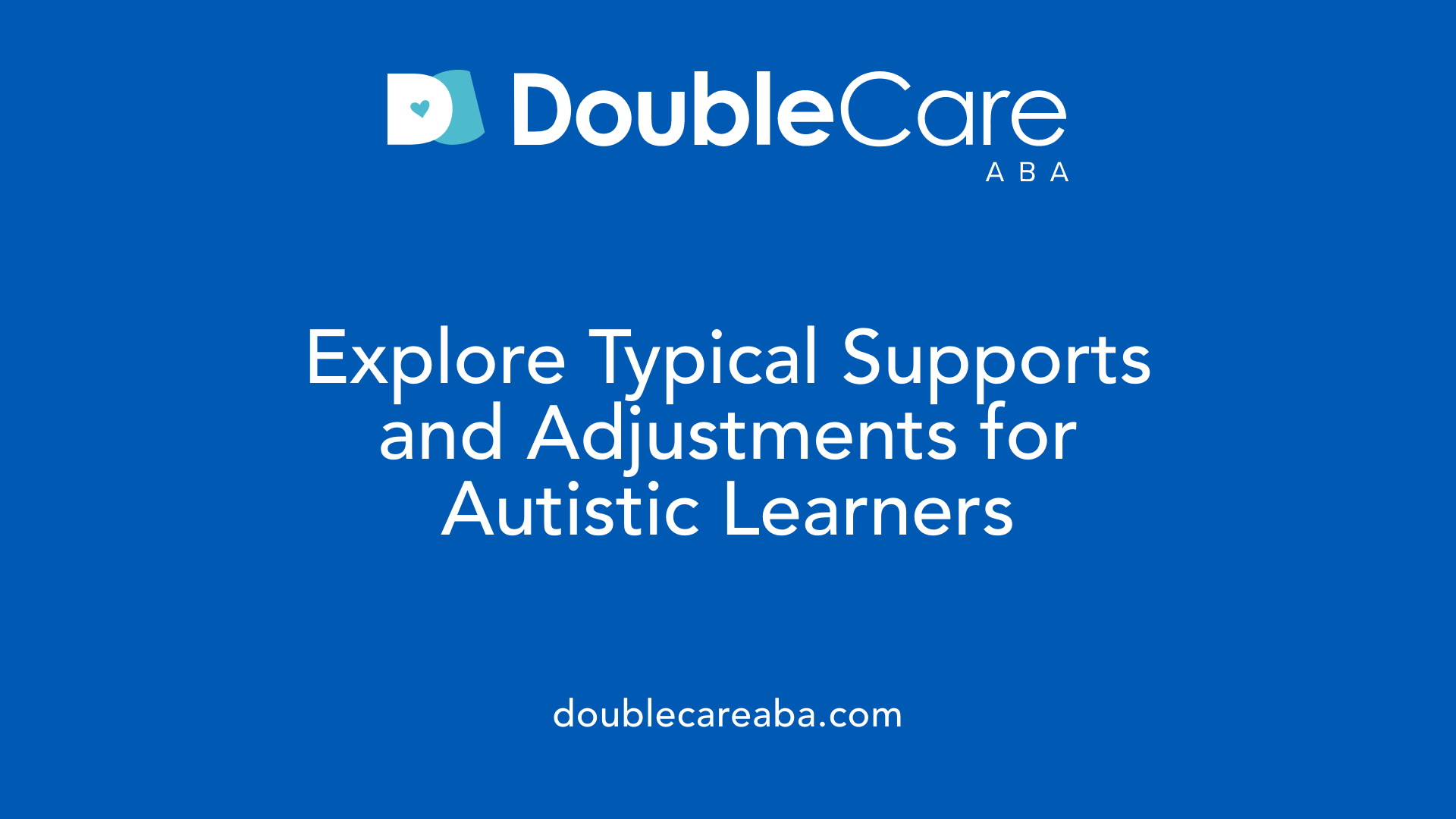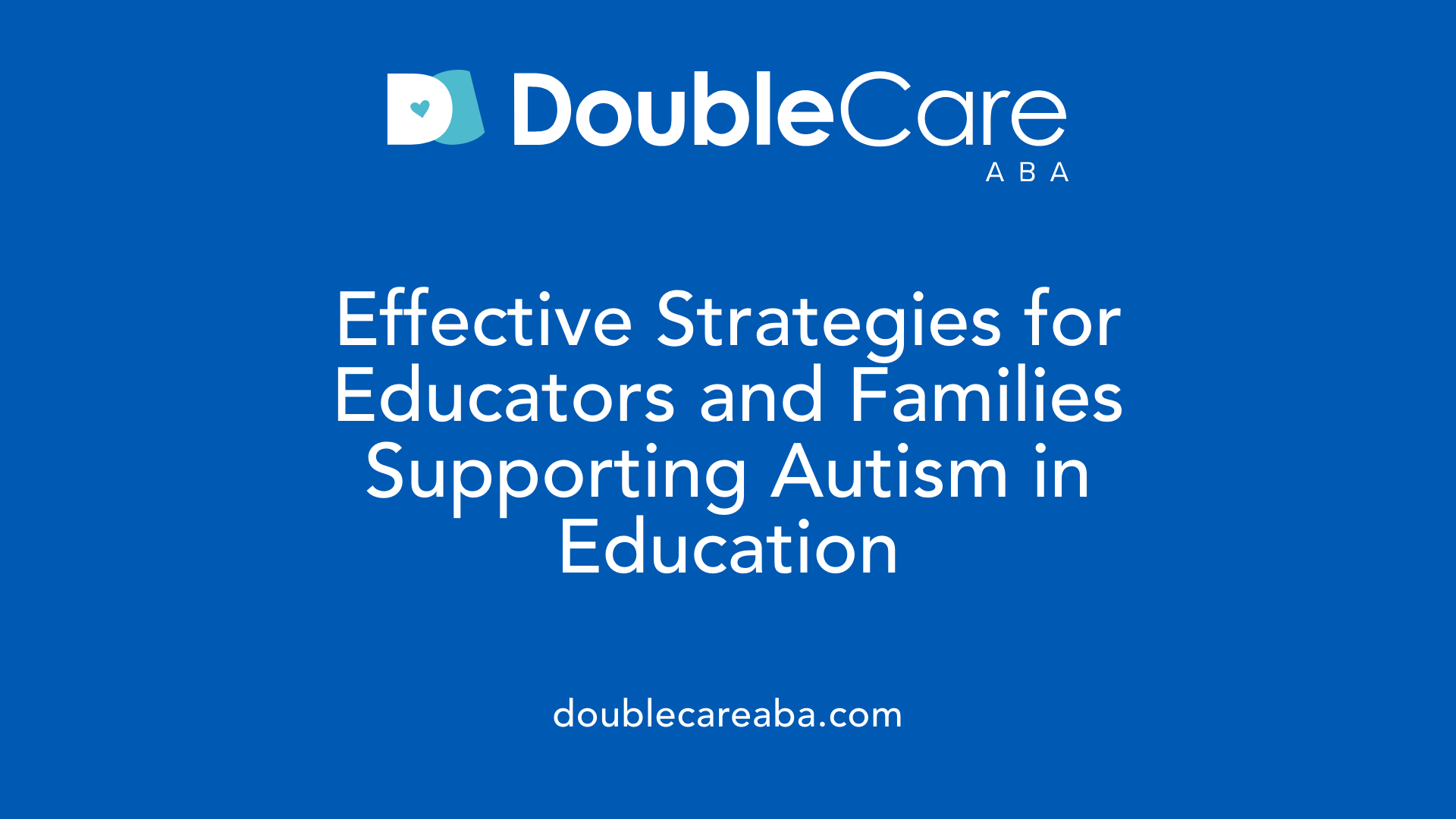Understanding Accommodations for Students with Autism
Educational accommodations for students with autism are essential modifications and supports designed to create equitable learning opportunities. Tailored to address sensory, behavioral, communication, and learning differences, these accommodations help minimize the challenges that autism presents in academic settings. By providing a structured, sensory-friendly, and inclusive environment, teachers and schools can ensure that students with autism have the resources and support needed to succeed academically, socially, and emotionally.
Defining Accommodations and Their Purpose

What accommodations are for students with autism?
Accommodations for students with autism are specific adjustments and supports tailored to meet their unique learning styles and sensory needs. These can include environmental modifications like quiet areas and sensory-friendly spaces, sensory tools such as noise-canceling headphones and fidget toys, and visual supports like schedules, social stories, and visual cues.
Behavioral strategies and structured routines—such as visual schedules and task breakdowns—help students understand expectations and stay organized. Assistive technologies, including speech-generating devices and organizational apps, facilitate communication and independence.
These supports are often documented in legal plans like Individualized Education Programs (IEPs) or 504 Plans, which are developed by a team of educators, therapists, and families. The goal is to address individual sensory, behavioral, communication, and learning needs effectively.
Purpose of accommodations in education
The main purpose of providing accommodations is to create an equal opportunity for students with autism to access curriculum material, participate fully in classroom activities, and demonstrate their knowledge without being hindered by their challenges.
By reducing sensory overload, supporting communication, and breaking tasks into manageable steps, accommodations help diminish the barriers posed by autism. They enable students to focus, stay motivated, and succeed academically and socially.
These modifications do not alter the educational content or standards but instead adjust how students engage with the material, ensuring fairness and inclusion.
In essence, accommodations serve to level the playing field, fostering a supportive environment where autistic students can thrive alongside their peers, develop confidence, and reach their full potential.
Eligibility, Rights, and Legal Frameworks

What are the eligibility criteria and rights related to accommodations for students with autism?
Eligibility for accommodations for students with autism depends on an individual evaluation that confirms the student has a diagnosed condition significantly impacting their learning and daily functioning. This assessment must be comprehensive, often conducted by professionals using recent evaluations aligned with the DSM-5 criteria. It should detail the nature of the autism diagnosis, the resulting limitations, and the specific supports needed.
Schools utilize these evaluations to decide if a student qualifies for services under laws like the Individuals with Disabilities Education Act (IDEA) and Section 504 of the Rehabilitation Act. These laws entitle students to receive tailored accommodations, such as an Individualized Education Program (IEP) or a 504 plan, which help ensure equal access to learning environments.
Students are also protected under the Americans with Disabilities Act (ADA), which guarantees reasonable accommodations in educational settings, public spaces, and even employment, unless providing them would cause an undue hardship. These legal protections affirm the student's right to access support and modifications that address their unique needs.
In essence, eligibility and rights are grounded in a careful, individualized approach, relying on proper documentation and adherence to legal standards. This framework aims to promote inclusion and equitable learning opportunities for students with autism, fostering their success in educational settings.
Common Accommodations and Adjustments

What are typical accommodations and adjustments used to support autistic students in educational settings?
Supporting autistic students effectively requires a variety of accommodations and adjustments tailored to their individual needs. These supports are designed to provide a learning environment that promotes equality, participation, and success.
One of the most common accommodations involves sensory supports. These may include sensory tools like fidget toys, weighted lap pads, and noise-canceling headphones to help students regulate sensory input. Quiet or sensory-friendly spaces are also provided where students can retreat when feeling overwhelmed. Regular sensory breaks, such as walking, listening to calming music, or engaging with sensory items, help students manage sensory overload and stay focused.
Visual supports are essential in helping students understand routines and expectations. Visual schedules, social stories, visual cues, and graphic organizers assist in explaining daily activities, transitions, and social interactions, leveraging students' strengths in visual learning. These tools foster predictability, reduce anxiety, and encourage independence.
Additional modifications include flexible seating arrangements, such as bean bags, wobble stools, or therapy balls, which allow movement and comfort during lessons. Structured routines with clear, concrete instructions help students anticipate what comes next, creating a secure learning environment.
Response and participation modifications also play a significant role. These can include alternative methods for assessments and activities, like oral responses, typing instead of writing, or using assistive technology. Adjustments in task difficulty and timing, such as extended test time, help students demonstrate their knowledge without undue pressure.
Implementing individualized behavioral supports, such as social skills training, clear rules, and reinforcement systems, encourages positive behavior and social interactions. Overall, these accommodations aim to create a predictable, sensory-friendly, and supportive classroom environment that addresses each student's unique challenges and strengths.
Supporting Strategies for Educators and Caregivers

How can educators effectively support students with autism through accommodations?
Supporting students with autism involves tailoring teaching methods and classroom environments to meet their unique needs. Teachers can implement visual supports such as schedules, social stories, and visual cues to provide structure and predictability, which help reduce anxiety and promote independence.
Sensory accommodations, like noise-cancelling headphones, sensory-friendly spaces, and sensory breaks, are essential for helping students regulate their sensory input. Structured routines, clear instructions, and breaking tasks into manageable steps support executive functioning challenges common among autistic students.
Flexible seating arrangements and sensory tools, such as fidget toys and weighted lap pads, enable students to stay focused and comfortable. Using assistive technology, like communication apps and visual timers, enhances understanding and participation.
Positive behavioral supports, including reinforcement and social skills training, foster positive interactions and build confidence. Teachers should also promote an inclusive classroom by encouraging peer support and understanding.
How do collaboration with families and specialists enhance support?
A strong partnership with families and professionals is crucial for effective support. Open communication ensures that educators understand each student's specific needs, preferences, and goals.
Families can provide valuable insights into their child's interests, triggers, and successful strategies used at home. This information helps tailor accommodations and instructional methods.
Specialists such as speech therapists, occupational therapists, and behavior analysts contribute expertise to develop targeted interventions and behavioral plans.
Regular meetings and shared progress updates foster consistency between school and home, reinforcing effective strategies and addressing challenges collectively.
What role does professional development play in creating inclusive classrooms?
Increased training for educators on autism and inclusive teaching practices equips them with current knowledge and practical skills. Professional development topics should include understanding sensory sensitivities, implementing visual supports, managing challenging behaviors, and fostering social inclusion.
Ongoing learning opportunities, such as workshops, coaching, and peer collaboration, help teachers adapt to diverse classroom needs. Emphasizing neurodiversity and promoting a culture of acceptance encourages positive classroom environments.
Inclusion practices are also supported by implementing universal design for learning (UDL), which provides multiple means of engagement, representation, and expression.
By continuously enhancing their skills and knowledge, educators can create supportive, respectful, and effective learning environments for all students with autism.
Resources, Tools, and Interventions
Implementing accommodations effectively for students with autism requires a comprehensive set of resources and tools tailored to their unique needs. Schools and educators can access a variety of sensory supports, including sensory processing tools, sensory-friendly areas, noise-canceling headphones, and calming spaces designed to reduce sensory overload and promote focus.
Behavioral supports are also critical, featuring visual prompts, social stories, token economies, and reinforcement systems that encourage positive behaviors and independent skills. Educational tools such as visual schedules, multisensory instruction methods, graphic organizers, and visual cues help clarify routines and content, making learning more accessible.
Assistive technologies play a significant role in supporting communication and organization. Devices and apps, including speech-to-text software, word prediction tools, audio materials, and digital visual schedules, aid students in reading, writing, and managing their tasks. Modern technology fosters independence and enhances engagement.
Supporting executive functioning is achieved through tools like visual checklists, timers, and task analysis to help students plan, initiate, and complete activities. In addition, a team-based approach incorporating related services like occupational therapy, speech-language therapy, and behavioral intervention ensures that interventions are tailored and effective.
Beyond the school environment, resources such as employment accommodation guides, housing support services, and community programs provided by government agencies and organizations dedicated to disability support broaden the scope of assistance. These resources ensure that students with autism receive support across all areas of life, promoting inclusion, independence, and overall well-being.
| Resource Type | Examples | Focus Areas |
|---|---|---|
| Sensory Supports | Noise-canceling headphones, sensory rooms, fidget toys | Senses regulation, calming |
| Behavioral Supports | Visual prompts, social stories, reinforcement systems | Behavior management, social skills |
| Educational Tools | Visual schedules, graphic organizers, multisensory materials | Learning, comprehension |
| Assistive Technology | Speech-generating devices, organizational apps, audio books | Communication, organization |
| Support Services | Occupational therapy, speech therapy, social skills training | Therapy, functional skills |
| Community & Policy Resources | Disability employment supports, housing programs | Life skills, independence |
Compliance, Policies, and Inclusive Education Frameworks
What are the legal and policy considerations involved in providing accommodations for students with autism?
Providing suitable accommodations for students with autism is guided by comprehensive laws and policies to ensure fair and equal access to education. Federal legislation such as the Individuals with Disabilities Education Act (IDEA), Section 504 of the Rehabilitation Act, and the Americans with Disabilities Act (ADA) form the backbone of these policies.
IDEA mandates that students with disabilities, including autism, receive individualized education programs (IEPs) and are educated in the least restrictive environments possible—meaning inclusion in general education classrooms whenever appropriate. This law emphasizes that students should not be segregated based on their disabilities, promoting a more integrated and inclusive learning environment.
Section 504 and the ADA prohibit discrimination against students with disabilities. They require schools to make reasonable accommodations that enable equal participation, such as accessible facilities, sensory-friendly spaces, and adaptive materials. These laws ensure that students with autism have access not only to education but also to school resources and activities.
Legal cases like Olmstead v. L.C. reinforce the importance of community-based inclusion, emphasizing that students should not be unnecessarily institutionalized or segregated. These rulings influence policies to favor inclusive settings, promoting social integration and participation.
In addition to federal laws, many states have their own regulations that support and expand upon these protections. This includes policies related to autism-specific insurance coverage or supports for transition to postsecondary education and employment.
Navigating these legal frameworks involves understanding obligations to provide necessary modifications—such as sensory accommodations, communication supports, structured routines, and behavioral interventions—tailored to each student's needs. Schools must document accommodations clearly in IEPs or 504 plans, ensuring compliance and consistency.
Overall, these policies collectively aim to uphold fairness, promote inclusion, and provide students with autism the opportunity to succeed academically and socially in a supportive environment.
For further information, searching for 'Legal and policy considerations for autism inclusive education' can offer detailed insights into current laws, recent amendments, and evolving best practices in inclusive education.
Fostering an Inclusive and Supportive Learning Environment
Implementing effective accommodations for students with autism is a collaborative effort that involves educators, families, specialists, and policymakers. Understanding individual needs, leveraging available resources and technology, and adhering to legal frameworks are crucial steps toward creating inclusive educational environments. By fostering understanding, acceptance, and tailored support strategies, schools can help autistic students thrive academically, socially, and emotionally, ultimately paving the way for greater inclusion, participation, and success in their educational journeys.
References
- Classroom & learning accommodations for autistic students - xMinds
- What accommodations are helpful for an autistic student?
- Home | AccessCSforAll - University of Washington
- Nine Domains of Accommodations - Autism Research Institute
- School Supports and IEP & 504 Accommodations for Autism
- Reasonable Accommodations for Students with Autism - Recite Me
- Top 10 IEP Accommodations for Students with Autism - Ori Learning














